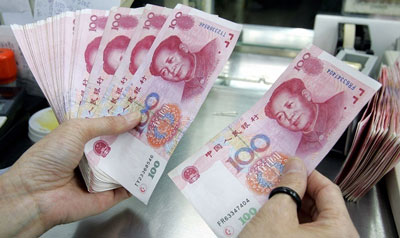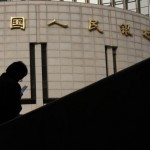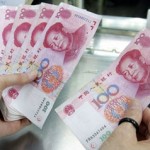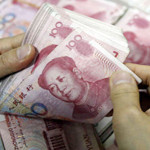China is starting to roll back measures meant to prop up its currency

China is starting to roll back measures meant to prop up its currency after a recent surge in the yuan erased all of last year’s losses.
Starting today, the central bank has scrapped a reserve requirement rule on trades called currency forwards, making it cheaper for investors to buy dollars while selling the yuan. Banks previously had to set aside 20 percent of the previous month’s yuan forwards settlement amount for use as foreign exchange risk reserves. The People’s Bank of China is also removing a reserve requirement on yuan deposits for foreign banks.
These actions, along with tighter capital controls, were likely aimed at tempering yuan depreciation and to shore up confidence in the world’s second-largest economy. Experts say the government’s playbook worked: The yuan has strengthened 6.7 percent against the U.S. dollar this year, reversing last year’s tumble entirely.
Rolling back these rules might be a “small measure … [but it’s] a sign that there’s a little more confidence, a little more flexibility,” Hugh Young, managing director and global head of equities at Aberdeen Standard Investments, told CNBC’s “Squawk Box” on Monday.
China’s central bank sets a daily reference rate for the yuan, and restricts currency trading to a 2 percent band within that midpoint. On Monday, the government set the central parity rate higher for the 11th straight session, putting it at 6.4497 per dollar – the strongest in more than a year.
That may be a calculated move by the government ahead of an expected visit by U.S. President Donald Trump to China later this year, and in advance of the Party Congress, Callum Henderson, managing director at political risk consultancy Eurasia Group, told CNBC’s “Squawk Box” on Monday.
He said he expected the yuan to continue to strengthen in the short term.
Trump has accused China of unfair trade practices, and the U.S. has long said the country unfairly holds down the value of its yuan to boost trade. A higher yuan gives Beijing a reason to push back on those claims.
For authorities, the yuan has been a high-wire balancing act. A stronger yuan coupled with weaker demand may be starting to hit trade, an important pillar of the Chinese economy. August exports were up 5.5 percent, softer than the 7.2 percent growth in July, according to official data released Friday.
Any significant move in the yuan in any direction is cause for concern, as Beijing’s priority has been to engineer stability in its markets and economy ahead of a change in leadership next month at the 19th Party Congress. As such, China has been pulling all sorts of policy levers to temper volatility.
And of course, despite recent strength in the yuan, the reasons it weakened significantly last year haven’t gone away. A massive amount of money leaving China pushed the yuan down in 2016, as investors sought better returns elsewhere, prompting the government to tighten capital controls.
“While capital controls have helped to stabilize outflows, the desire for domestic residents to diversify into foreign assets is still strong,” said Wang Tao, an economist at UBS, said in a note on Friday.
If China’s economy starts to lose steam toward the end of the year, and the U.S. dollar starts to appreciate, both scenarios could spell trouble for the yuan.
On top of that, Wang said she expected trade tensions between the U.S. and China to rise, calling it the “biggest risk factor” for the currency next year.
Source: CNBC – China scales back measures propping up its currency now that yuan has surged




























